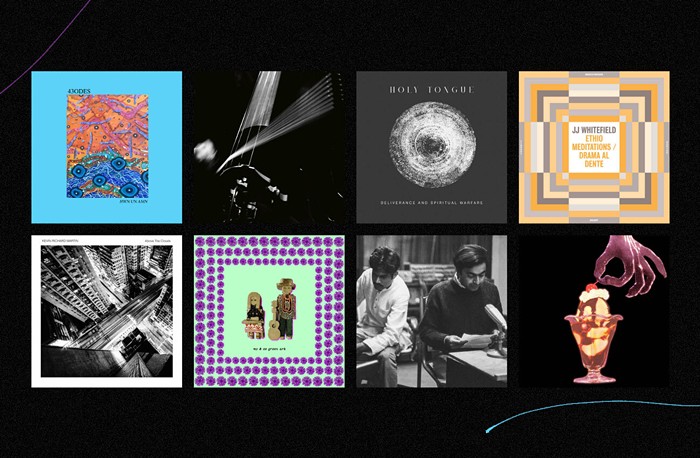On November 25, Seattle-based label Light in the Attic will release a collection of ultra-rare songs by Native American musicians, Native North America (Vol. 1): Aboriginal Folk, Rock, and Country 1966-1985. LITA is calling this 34-track compilation “our most ambitious and historically significant project in our label's 12-year journey.” The release comes in double-CD and triple-LP formats; the former includes a hard-cover 120-page book featuring exhaustive liner notes by Kevin "Sipreano” Howes, artist interviews, archival photos, and lyrics (with translations) while the latter has 60-page booklet with all the same features as the CD. Those who pre-order now can score the limited-edition tan wax, tote bag, and sticker.
Vancouver-based record collector and curator Howes spent 15 years traveling great distances to locate these records and dig for their creators’ back stories while piecing together their historical context. I asked Howes to explain what made this music stand out from other output of its time and if he encountered any surprises while working on the project.
“The music featured on Native North America (Vol. 1) showcases a key selection of trailblazing Aboriginal musicians, poets, and artists who were inspired, like other musicians from around the world, by the global developments in folk, rock, and country during the 1950-60s. These artists combined a passionate love of music with their distinct Indigenous cultures to create something truly unique. In the pre-internet days, both radio and travel brought music through the airwaves and onto the turntables of these players, many of whom lived in remote communities across Canada and the northern United States.
“It blew me away thinking that members of Salluit, Quebec-based Sugluk, were grooving to Creedence Clearwater Revival on their stereos in the Canadian Arctic or that Cree singer-songwriter Lloyd Cheechoo was rocking out to Black Sabbath in the James Bay region of northern Ontario. Did you know that the Chieftones (Canada's All Indian Band) shared a stage with the Beach Boys the week that the latter's seminal Pet Sounds was released? It not only demonstrates the power of music, but how it can influence and inform new styles and feelings.
“When I first heard the original recordings featured on NNA V1, I had to learn more about these records, how they were made and by who. A songwriter like the legendary Willie Dunn was easier to find information about than others (Dunn made the landmark Ballad of Crowfoot film for the National Film Board of Canada in 1968), but in all cases I had to go straight to the source to find out more. Unfortunately, Inuk troubadour Willie Thrasher was not in The Encyclopedia of Canadian Music. Hopefully, that will change. These artists should take their righteous place in our collective cultural history.”



















